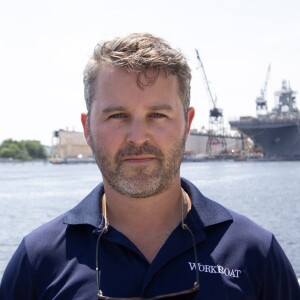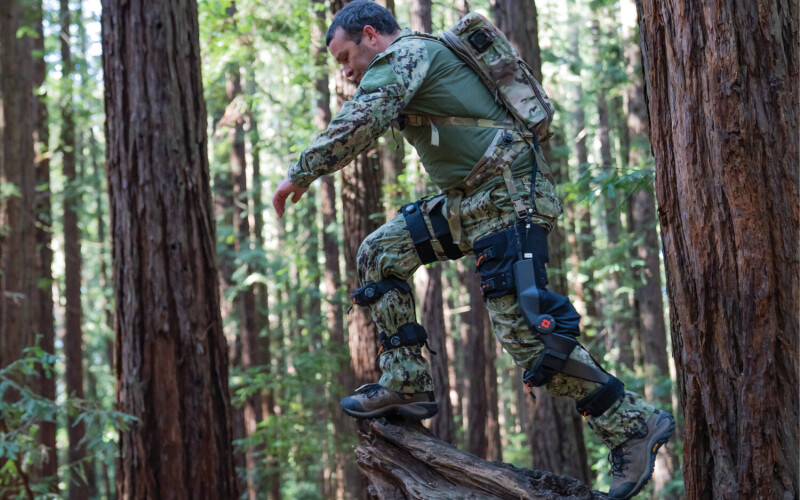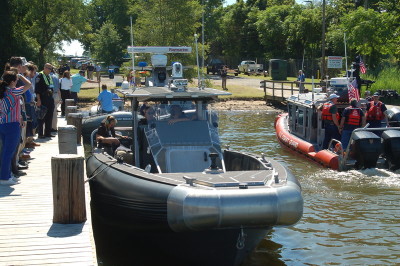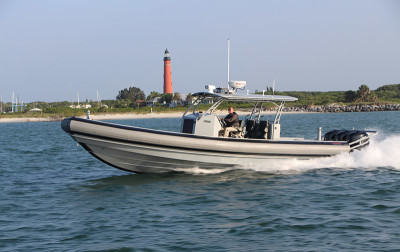The Multi-Agency Craft Conference (MACC), put on by the American Society of Naval Engineers, took place this week in Portsmouth, Va. The event serves as an open forum for exchanging operational and technical information on small boats and craft between government agencies and the maritime community.
This year's event was my first time attending, and I had the opportunity to experience some new technology used in the military sector. One of the highlights was the innovative products from ROAM, a San Francisco-based wearable robotics company. ROAM's product line is designed to enhance the capabilities of first responders and military personnel, as well as alleviate the pressure on the lower body when the boat is in extreme conditions.
After experiencing my first set of water trials on Ocean Craft Marine’s (OCM) 11.5-meter (37.7') Offshore Interceptor, I hopped out of the comfortable Ullman Atlantic crew seat and made my way to the stern of the boat to inspect the triple 400- hp Mercury V10 outboards.
“Want to try some robot legs?” asked Tony Perez, the product lead at ROAM. He then equipped me with their modular power pack and robotic knee system. ROAM’s modular power pack generates pressurized air for the system, coupled with AI-guided control software that actively adapts to the user’s movements. This system is designed to “provide power when you need it and stay out of the way when you don’t,” according to the company’s website. The robotic knee’s actuator is a pneumatic device that converts air pressure into usable torque for the body.
The brace systems were attached to my legs to assist in power transfer while also providing stability and support to my knees.
.jpeg.medium.800x800.jpg)
“To power the system, hold the button for a half second,” Perez instructed. The pressurized system immediately engaged, with LED lighting indicating the power setting. Perez highlighted the system’s ideal use cases, favored by customs and border protection officers for stability, especially from their firing platforms. He also mentioned that the ROAM system is lighter than shock seating, which he stated offers additional capacity for the vessel, including fuel efficiency and range benefits.
After a quick demonstration on how to operate the power pack’s toggles, we were off again for the second water demo, this time standing on the stern of the boat.
“The human component is the weakest link in the chain, right? You have vessels that are capable of doing so much more. That’s why they’ve integrated so many different solutions to make the human interface easier and more sustainable… All those impacts, they add up cumulatively,” Perez explained.
The vessel was operated by Todd Salus, OCM vice president, and retired senior patrol leader, and two-tour combat veteran of the U.S. Navy’s Coastal and Riverine Warfare Squadron Two-Five.
Underway, Salus cut tight turns at just under 50 mph, intentionally running his own wake. The robotic knee system engaged, providing eased bounce and shock absorption. To see the difference the ROAM system made to my posture, I turned it off and on mid-demonstration. Despite the calm conditions on the Elizabeth River, Salus' maneuvers allowed for a noticable difference with and without the ROAM robotics system.





